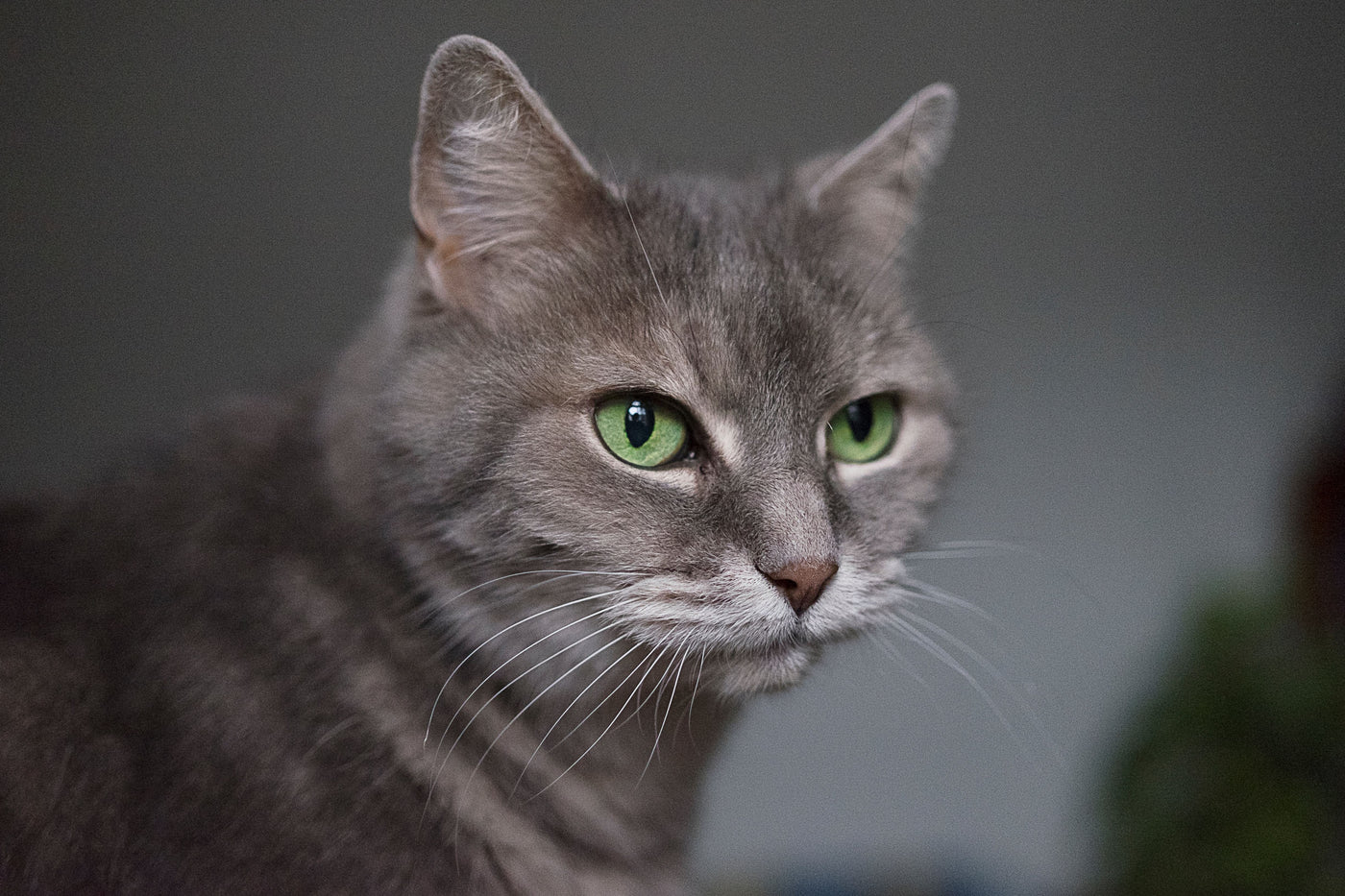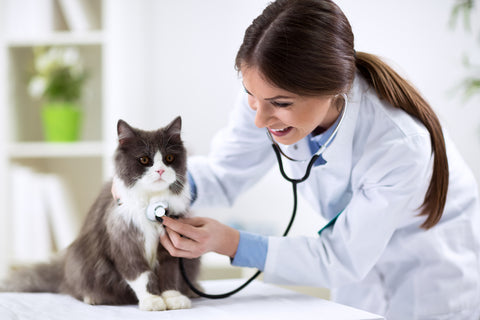
Chronic kidney disease (CKD) is a renal disease associated with a gradual loss of kidney function over a period of several months or years. Unlike acute renal disease, which develops suddenly and progresses rapidly, CKD progresses slowly and persistently, often with no apparent symptoms until later stages. CKD is also known under terms chronic renal disease (CRD), chronic renal failure (CRF) and chronic renal insufficiency. Let's review Chronic Kidney Disease in cats in this blog.
Background information ON CHRONIC KIDNEY DISEASE IN CATS
The kidneys are the two bean-shaped organs of the renal system and are involved in the filtration of the blood. The main structural and functional unit of the kidney is the nephron. Nephrons process the blood through filtration, reabsorption, secretions and excretion. In the first step, the blood is filtered. Cells, proteins and other large molecules are retained, while smaller molecules are filtered into an ultrafiltrate that will eventually become urine.
Then, water (~55%) and electrolytes are reabsorbed from the ultrafiltrate back into the blood system and terminal metabolic products (waste products) are secreted from the blood into the ultrafiltrate. Finally, ultrafiltrate is excreted into the ureters, where it becomes urine.
Through this process of filtration and excretion, kidneys help maintain the homeostasis in the kitty's body. They regulate acid-base balance, electrolyte levels, water levels, blood pressure and they help elimination of waste products. Kidneys also produce erythropoietin which is necessary for erythropoiesis (production of erythrocytes). Waste products that are eliminated via urine are generated from degradation of food, old cells and molecules, toxins or poisons and drugs.

In chronic kidney disease, the function of kidneys is gradually and rapidly lost. Because kidneys utilize so many important functions, the disrupted function of kidneys may result in numerous health problems. In CKD, however, by the time the affected cat shows any evident signs, the damage to the kidneys is typically severe.
Causes of chronic kidney disease in cats
Chronic kidney disease in cats is a complex, multifactorial disease, caused by long-standing, irreversible damage to the kidney. It is often difficult to determine the exact cause of a particular case, however, because the symptoms usually aren't apparent until late stages. Some of the potential causes of CKD involve: congenital defects of kidney, chronic bacterial infections, immune diseases, kidney tumors, glomerulonephritis, acute kidney disease, kidney trauma, poisoning. Causes often remain unclear.
Symptoms and diagnosis of chronic kidney disease in cats
In CKD, by the time the affected cat shows any evident signs, the damage to the kidneys is typically severe. The most common signs include:
a) lethargy (due to accumulation of waste products in the blood),
b) weight loss and disrupted appetite,
c) polyuria and polydipsia (due to disrupted regulation of water levels),
d) blood acidification (due to accumulation of acids in the blood),
e) anemia (due to disrupted levels of erythropoietin), and, in some cases,
f) hypertension (due to lack of potassium levels regulation);
Less common signs involve internal bleeding, bruising of the skin, skin itchiness, blindness, weakened bones, pale gums, ulcers in the mouth and others.

To diagnose PKD, your cat's veterinarian will often assess a few tests including blood and urine analysis tests, abdominal ultrasound and radiographs, kidney biopsies, bacterial cultures and coagulation tests.
Treatment and prognosis
Unfortunately, CKD doesn't have a definitive cure. The earlier the disease is diagnosed and addressed, the better prognosis is. Sadly, because signs remain unapparent until late stages of the disease, it can be difficult to diagnose the disease until the damage to the kidneys has been severe already. Severe kidney damage is often lethal, but the speed of the progression of the disease is highly individual.
Some affected cats can respond well to therapy which can help slow the progression of the disease down and address the signs. The CKD therapy targets the elimination of waste products from the bloodstream, ensures adequate hydration, maintains electrolyte concentration, controls blood pressure, supports appropriate nutrition and slows the progression of the disease. While some cats respond to the therapy very well, others may not.

CKD is a serious, severe disease characterized by progressive and rapid loss of kidney function. Because kidneys carry out many, highly important functions in the body, they are vital for the healthy functioning of the body.
The progression of the disease is variable; thus, early and correct diagnosis and therapy are essential for the improvement of the life quality of affected cats. With the improvement of feline science, the hopes are that the future holds a better quality of diagnosis and therapy of this and other diseases in cats.
Would you like to learn more about other common diseases in cats, such as HCM or PKD? Explore our blogs page and find the material of your interest, or leave us feedback on social media with any reading wishes.



